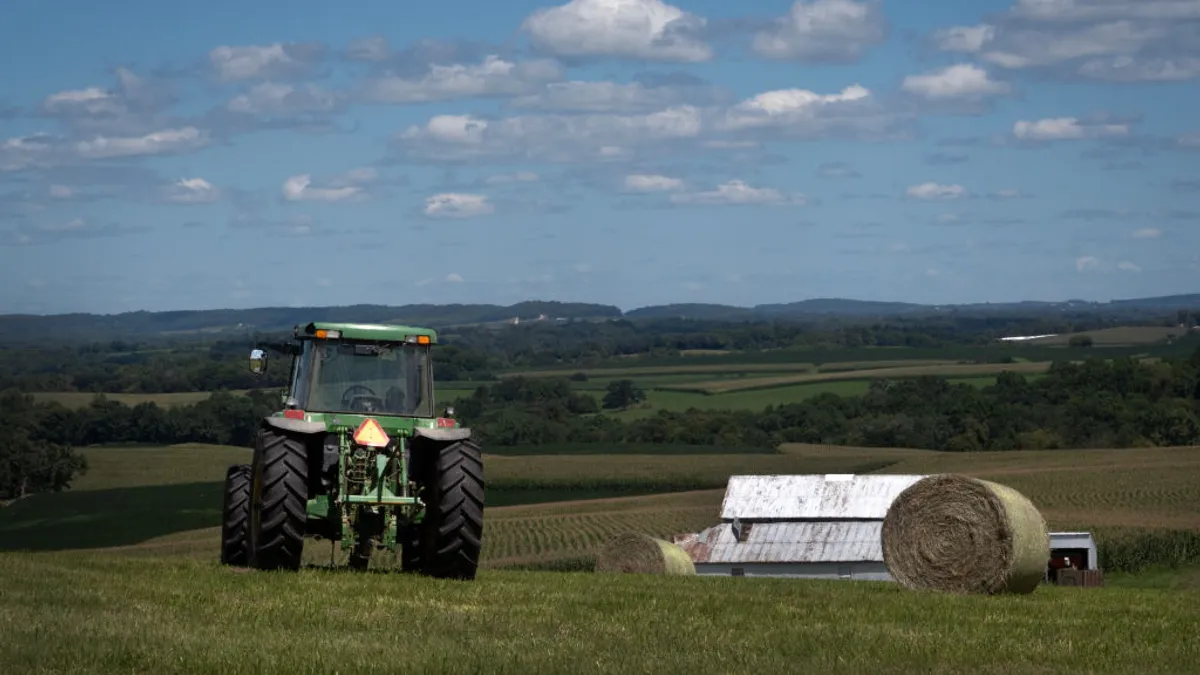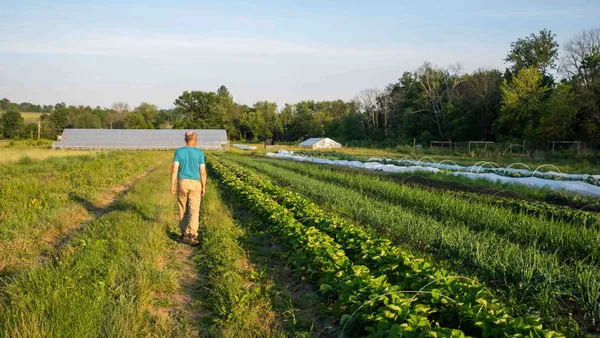Dive Brief:
- The U.S. Department of Agriculture introduced guidance to help farms measure the emissions saved from climate-smart crops grown for biofuels, a step toward helping producers access renewable fuel tax credits.
- The interim rule, released roughly a week before the end of Former President Joe Biden's term, establishes standards to track and report the impacts of sustainable farming practices in corn, soy and sorghum — three major feedstocks used in alternative fuels.
- The guidance had been expected to increase farm participation in biofuel tax credit programs. However, a Trump administration freeze on recent federal regulation injects uncertainty into the future of these new opportunities.
Dive Insight:
The proposal is meant to ultimately inform future regulation on how climate-smart agriculture can be used in renewable fuel production, paving the way for farmers to capitalize on growing opportunities within the biofuels market.
Biofuel producers have been eagerly awaiting instructions on how to qualify for 45Z clean fuel credits under the Inflation Reduction Act. The tax credits could substantially expand opportunities for crop-based biofuels for use in passenger vehicles and sustainable jet fuel.
However, the Treasury Department's 45Z guidance, released a few days before the USDA interim rule, had been criticized by agricultural groups for a lack of details around what practices qualify.
The USDA's interim rule is meant to fill gaps in guidance from the Treasury Department and potentially shape future biofuel regulations. The proposal also addresses criticism from the 40B sustainable aviation fuel credit program, which required growers to use a combination of specific farming practices to qualify for tax benefits.
The new guidance defines the climate-smart practices that could be used, including reduced till, cover cropping and improved nutrient management. Farms will have the flexibility to adopt practices individually or in combination, which was not an option under the 40B program.
Geoff Cooper, president and CEO of the Renewable Fuels Association, said in a statement that the guidelines create much-needed structure for assessing carbon reduction benefits. The initial framework "could ultimately allow farmers to actively participate in carbon markets, bringing new revenue streams and unprecedented value creation to rural communities," he said.
While the USDA rule provides some clarity to producers, the fate of the 45Z tax credit remains unclear. President Donald Trump ordered a freeze on all pending federal regulation not yet effective — including the Treasury's guidance on the IRA renewable tax benefits.
In the absence of clear guidance for producers, the Trump administration is looking to boost biofuel production in other ways. The president is considering an emergency fuel waiver to allow year-round sales of E15 gasoline.
In Congress, a group of senators introduced the "Farm to Fly Act" to incorporate sustainable aviation fuel into USDA programs, expanding producers' access to biofuel markets.
“Corn growers are poised to meet this market demand if given the opportunity,” National Corn Growers Association President Kenneth Hartman Jr. said in a statement. “We look forward to working with the Trump administration as this process evolves.”











